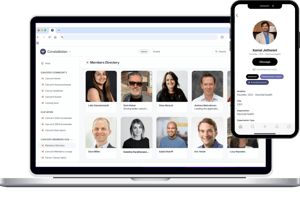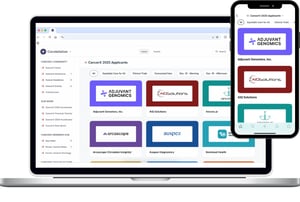
Digital Risk Stratification Revolutionizing Early Cancer Detection
Early detection can mean the difference between life and death in cancer treatment. The survival statistics tell a compelling story: Stage I colorectal cancer offers a 92% five-year survival rate, while Stage IV plummets to just 15.6%. Similar patterns exist across most cancer types, creating both a moral imperative and economic necessity to move diagnosis earlier in disease progression.
These aren't just statistics – they represent real people whose lives hang in the balance based on when their cancer is detected. And yet, despite knowing this, our approach to screening hasn't evolved much over the decades.
This gap between what we know and what we do is finally starting to close, thanks to significant investments in digital health innovation. Digital health venture funding reached $10.1B last year as part of a broader healthcare transformation. In cancer specifically, the Division of Cancer Control and Population Sciences invested nearly $583 million in 2024 across approximately 925 grants aimed at improving cancer outcomes and patient experiences.
So what's changing? For starters, we're moving away from the one-size-fits-all approach to cancer screening. Think about it – we currently screen women for breast cancer at age 40 or 50 based on general guidelines, rarely considering their individual risk factors. Women are screened for breast cancer at age 40 or 50 based on general guidelines, but rarely is the constellation of genetic, environmental, and lifestyle factors that truly determine risk incorporated.
Health system leaders are waking up to this reality. At recent CancerX Executive Roundtables, these leaders have been talking about "high-risk surveillance" as a critical initiative – identifying patients with elevated cancer risk and getting them into appropriate screening pathways before symptoms develop. They're recognizing that when we blend digital tools with risk assessment, we can be much smarter about who gets screened and when.
Digital tools now make it possible to create personalized risk profiles that consider family history, genetic predispositions, environmental exposures, and lifestyle choices. This creates a much more accurate picture of who needs enhanced screening, moving beyond simple demographic checkboxes.
For pharmaceutical companies developing cancer therapies, this shift creates profound strategic implications. First, it signals a market shift toward earlier-stage treatment paradigms, potentially expanding patient populations for therapies historically used in later-stage disease. Second, it creates opportunities to engage patients much earlier in their journey, transforming market development activities and patient education approaches.
The most forward-thinking pharma companies aren't waiting – they're already positioning themselves at this intersection of early diagnosis and treatment. Rather than viewing biomarker testing as something that happens after diagnosis, they're partnering with diagnostic innovators to create seamless pathways that connect risk identification directly to appropriate testing and subsequent treatment options.
This requires a different mindset about the patient journey. What if your therapy's patient journey doesn't begin when a doctor delivers a cancer diagnosis, but rather at the point of initial risk identification? What if market development activities should target not just oncologists but also primary care physicians and genetic counselors who participate in these emerging risk stratification programs?
Healthcare systems implementing these approaches are seeing remarkable results – identifying cancers at significantly earlier stages while simultaneously reducing overall screening costs through strategic resource allocation. It's a win for patients, healthcare systems, and pharmaceutical companies alike.
The evolution from reactive to proactive cancer care represents a fundamental reimagining of patient journeys. The traditional pathway, which begins with symptoms and clinical diagnosis, is being complemented by an emerging early intervention model that starts with risk identification. Where these pathways intersect – around precision diagnosis and comprehensive molecular profiling – pharmaceutical companies have an opportunity to create integrated solutions that serve patients regardless of how they enter the cancer care continuum.
The transformation of early cancer detection through digital risk stratification isn't a distant future – it's happening now. The question isn't whether risk stratification will transform early cancer detection—it's already happening. The real question is whether pharmaceutical companies will reposition themselves as partners in this transformation or remain focused only on the treatment phase of an increasingly outdated patient journey paradigm.
Want to learn more about how digital innovation is revolutionizing the entire oncology care spectrum? Download our comprehensive white paper "Precision Oncology: Innovative Approaches to Democratize Access and Optimize Patient Outcomes" to explore how digital tools are transforming cancer care from early detection through treatment optimization.
SCHEDULE A MEETING WITH AN EXPERT
Ready to innovate? Decimal Health is standing by to assist with your next Digital Health venture.
.png?width=125&height=125&name=logo_wt%20(3).png)






.png?width=300&name=CancerX%20Decimal%20Banner%20(2).png)